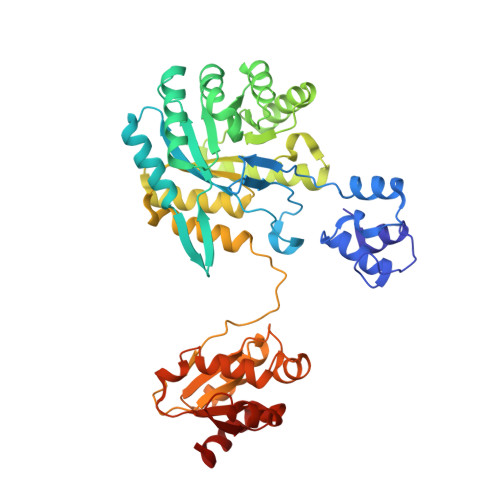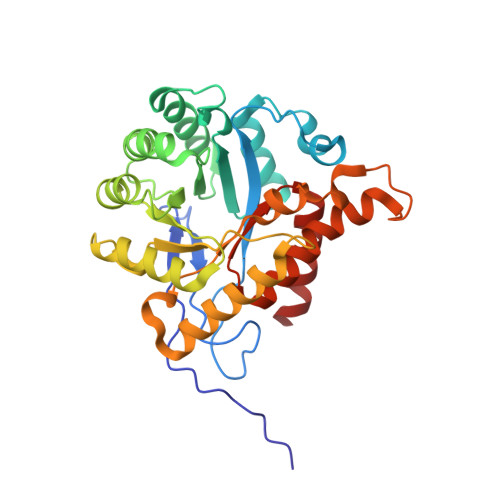ATP-Induced Electron Transfer by Redox-Selective Partner Recognition
Hennig, S.E., Goetzl, S., Jeoung, J.H., Bommer, M., Lendzian, F., Hildebrandt, P., Dobbek, H.(2014) Nat Commun 5: 4626
- PubMed: 25109607
- DOI: https://doi.org/10.1038/ncomms5626
- Primary Citation of Related Structures:
4C1N - PubMed Abstract:
Thermodynamically unfavourable electron transfers are enabled by coupling to an energy-supplying reaction. How the energy is transduced from the exergonic to the endergonic process is largely unknown. Here we provide the structural basis for an energy transduction process in the reductive activation of B12-dependent methyltransferases. The transfer of one electron from an activating enzyme to the cobalamin cofactor is energetically uphill and relies on coupling to an ATPase reaction. Our results demonstrate that the key to coupling is, besides the oxidation state-dependent complex formation, the conformational gating of the electron transfer. Complex formation induces a substitution of the ligand at the electron-accepting Co ion. Addition of ATP initiates electron transfer by provoking conformational changes that destabilize the complex. We show how remodelling of the electron-accepting Co(2+) promotes ATP-dependent electron transfer; an efficient strategy not seen in other electron-transferring ATPases.
- Humboldt Universität zu Berlin, Institut für Biologie, Strukturbiologie/Biochemie, Unter den Linden 6, 10099 Berlin, Germany.
Organizational Affiliation:





















